Nintendo Switch Lite Finds Portable Perfection Without Losing Anything Important
I finally get my hands on the first major revision of the Nintendo Switch.
This article first appeared on USgamer, a partner publication of VG247. Some content, such as this article, has been migrated to VG247 for posterity after USgamer's closure - but it has not been edited or further vetted by the VG247 team.
I enjoy my Nintendo Switch a great deal. The build quality is great, the library of Nintendo anchors and indies are fantastic, and the TV dock remains an elegant solution for allowing a home console and portable in the same shell. I haven't even fallen prey to the rampant Joy-Con issues that have plagued others. And it's about to be even better: the upcoming Nintendo Switch Lite makes cuts in all the right places. It's the system I wanted in the first place.
While I use docked play for work, mostly in terms of recording footage for use on USgamer, in my personal life, I'm a portable player. In that space, the Switch is fine. As a purely portable device, it's a bit ungainly and its weight is poorly distributed. On top of that, the console-level games on a portable platform means the battery life hasn't always been great. I travel nowhere without my hefty battery pack in tow.
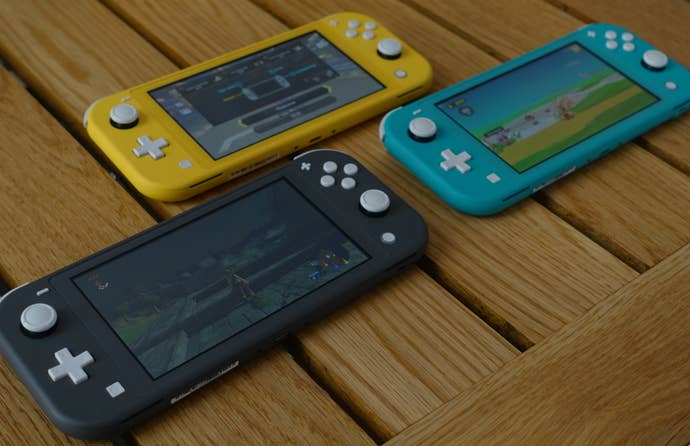
The Switch Lite is the first major revision to Nintendo's best-selling hybrid system. The vision for the Lite is seemingly reaching a lower price tier, the space that the 3DS somewhat still occupies to this day. To that end, the Lite drops part of what makes the Switch, the "Switch." You can't play the system in docked mode, as there's no way to switch from portable to docked play. The Switch Lite has a USB-C slot on the bottom, but it won't offer video out, even if placed in dock. Tabletop mode is also a no-go, as there's no kickstand and no Joy-Cons to detach, with the entire system being a single unit. To reach the $199 price point, the additional tech inside the Joy-Con are also gone: no HD rumble, no IR camera.
So you've lost a lot to cut $100 of hardware from the original Switch. What you gain is a more portable system. While the Switch is 4 inches high and 9.4 inches long, the Switch Lite cuts that down to 3.6 inches high and 8.2 inches long. The weight also drops from .88 lbs down to .61 lbs. The 6.2-inch screen shrinks down to 5.5 inches, but retains the same 1280x720 resolution.
Those are just the numbers though. How does the Switch Lite actually feel?

Once More With Feeling
Touching a Switch Lite for the first time last week, my first thought was, "Hello there. I've been waiting for you." Being handed a Turquoise Switch Lite—the system also comes in Yellow and Gray—I was surprised at how immediately solid it feels. The entire system is made by a thin plastic somewhere in-between the thickness of the backplate of the original Switch and the thicker plastic of the Joy-Cons. The entire Lite feels very sturdy though, with about as much flex to it as the original model. It's worth noting that it's a matte finish, meaning it doesn't seem to attract fingerprints like the back of the current Switch.
Certain parts of the Switch have moved in the Lite. The speakers have moved from the bottom front to the underside of the unit. It's a small move, but it does change the sound profile of the portable Switch a little. The kickstand is gone, but the microSD card slot is in the same spot, so there's now a flap, similar to current Game Card slot.
The controller inputs are also very different on the Lite, which is a change that surprised me. Since the left side of the unit no longer needs to function as a single controller, the face buttons there have been replaced by a proper directional pad. Officially called the "+ Control Pad," this directional pad does its job well, but you shouldn't expect a Pro Controller or SNES Classic d-pad grafted on here. It's much smaller and quite flat, without the additional weight of the Pro Controller's hunk of plastic. It also lacks the travel distance of the Pro Controller's d-pad, being a hair more "clicky". Playing Super Mario Maker 2 on the demo unit felt great and responsive. I can certainly see myself using it to play Mario Maker 2 well into the hours of the night.
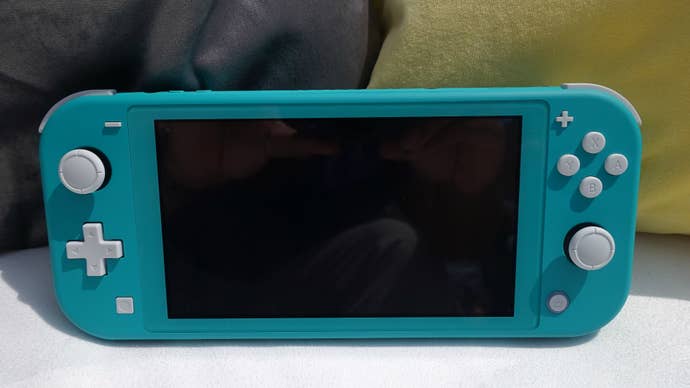

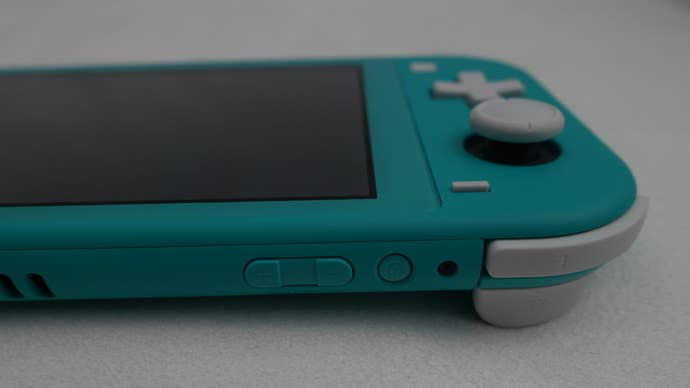
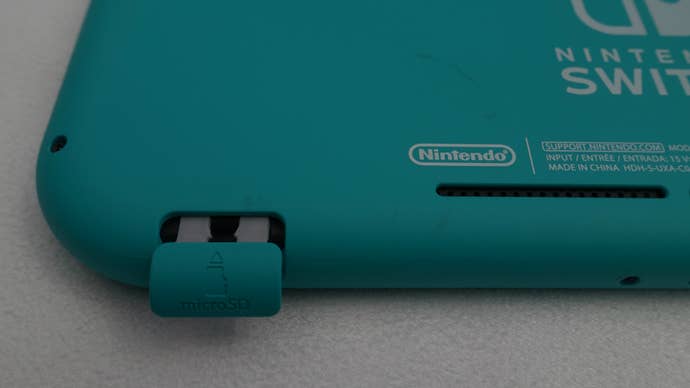
Oddly enough, the face buttons have changed as well. I would've expected the same buttons, but the Switch Lite has button tops that are flatter, instead of the more concave buttons on the original Switch. The button letters are no longer painted on, instead being etched directly into the button plastic itself. They also have a bit more up and down travel, feeling better to use overall. The additional travel is also apparent on the ZL and ZR triggers, as both also feel much tighter than the mushy triggers on the original Switch. Using these buttons actually makes me want Nintendo to bring these improvements back to the Joy-Con; I want the d-pad, sure, but the overall button feel of the Switch Lite is much better.
There's not much to add about the analog sticks, as I couldn't feel any real difference in construction. Instead, the only major change here is in terms of color: white on the thumbpads, but black underneath. Overall, the buttons and analog sticks feel like they're roughly in the same position as the original Switch, so if you're comfortable with the Switch in portable more now, you should be good with the Lite.
The Switch Lite has a smaller screen, but since the resolution is the same, there's an additional clarity that's immediately apparent. At maximum brightness, it was slightly brighter than my launch Switch, and the overall color of the screen leans a bit more toward green, compared to the bluer original model. It was noticeable when I had both screens side-by-side, but I think it'll probably not be something most notice when rocking the Switch Lite by itself.
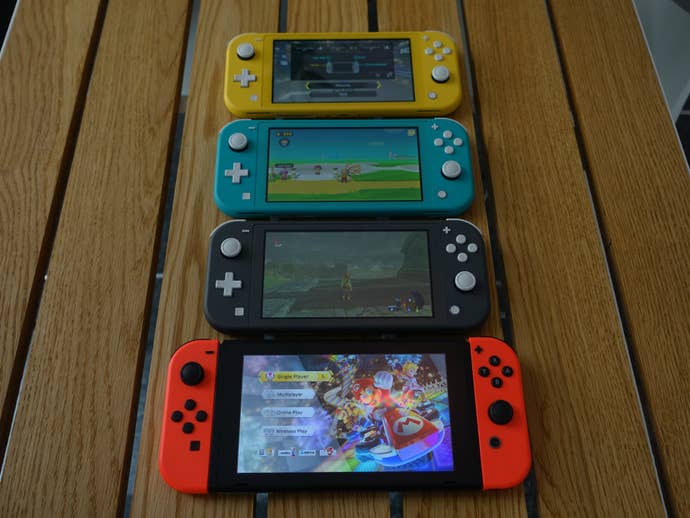

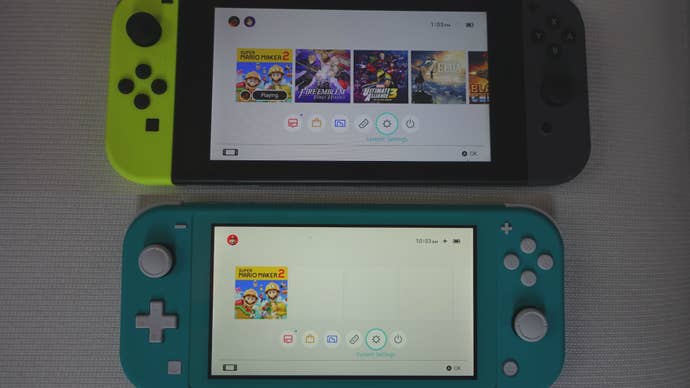
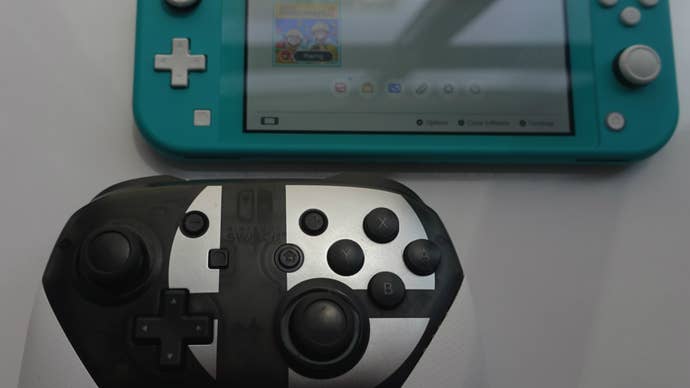
One of the biggest issues with playing Switch games in portable mode is the text size. Generally, developers tailor the user interface to playing on a television, not the tiny touchscreen. Even with the additional sharpness, I think it's still going to be a major problem for the Switch Lite. I asked if any of the demo units had Fire Emblem: Three Houses, because that game's text is entirely too small and would be a good indication of how the system plays with such small text. Unfortunately, the units only had Super Mario Maker 2, The Legend of Zelda: Breath of the Wild, and Mario Kart 8 Deluxe. It's an issue that I'll have to take a look at post-launch.
Putting that aside, the hand-feel of the Switch Lite is simply fantastic. The weight and heft of the Lite are spot on. To test, I literally laid down on a couch in the demo area, and held the Lite above my head. At home, this is how I usually play the Switch. The problem with the original Switch is that the weight tends to cause me to drop the Switch on my chest and face, and the length of the system makes it awkward when playing on my side. The Switch Lite sidesteps both problems, and felt great when I was testing it in both positions. Even better? The Switch Lite just about fit in my pockets! That only helps dudes with proper pants pockets-sorry ladies-but it's a big change for me.
I came into this demo thinking, "Man, I want a Switch Lite, but I can't afford it." I left the demo thinking, "Man, I need to figure out how to afford a Switch Lite." It's the portable revision that the Switch desperately needed in my opinion and my only drawback is the complete inability to send footage out to TV. The Nintendo Switch Lite, like the Nintendo DS Lite, Game Boy Advance SP, Game Boy Color, and Game Boy Pocket before it, is the second step this platform needs.


